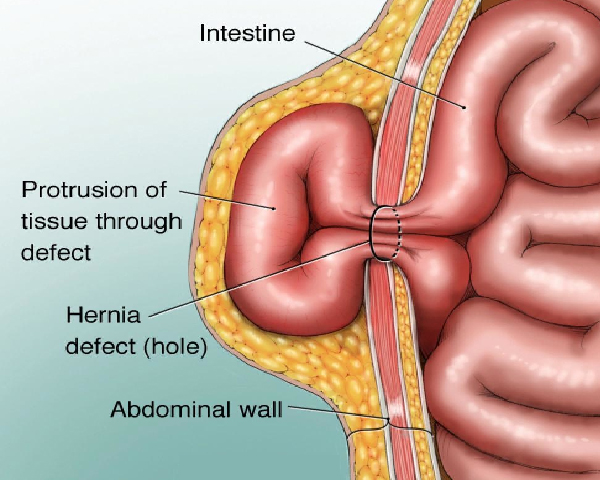
Hernia Surgery
Hernias occur when internal tissue or an organ breaks through a hole in the muscle. Herniorrhaphy or Hernia Repair Surgery involves returning the displaced tissue to the original position. Hernioplasty is another type of Hernia Repair Surgery which involves sewing a mesh patch over the weakened area of tissue. This is one of the most common types of surgeries performed for Hernia.
Types of Hernia
The type of Hernia Repair Surgery depends upon the nature of hernia. Following three are the most common types of hernias.- Reducible Hernia – This type of hernia is the one which can be pushed back through the opening it came from.
- Irreducible or Incarcerated Hernia – This is the type when the organ or the displaced tissue which cannot be pushed back through the opening it came from fills the hernia sac.
- Strangulated Hernia – When part of an organ or displaced tissue gets stuck inside hernia with blood supply often cut off is known as Strangulated Hernia.
Signs & Symptoms of Hernia
Typically, it takes 1 – 2 years of time for hernias to cause any noticeable, irritating or painful symptoms. Some people may only notice symptoms of hernia only while performing activities like strenuous exercise.
- Long-term pain or discomfort due to hernia
- Pain or discomfort interfering with daily activities
- Intensifying or worsening pain or discomfort over time
- Large hernias
- Fast-growing hernias
- Worsening or enlarging hernias in places like the groin
- Sharp abdominal pain & vomiting
- Hernias which put pressure on nerves so as to cause irritation & numbness
Some hernias never cause enough symptoms to call for medical intervention. However, hernias will not heal or resolve without surgical intervention. Surgery is usually necessary when negative symptoms occur.
Hernia Repair Surgery
There are two different types of Hernia Repair Surgery.- Herniorrhaphy – This procedure involves tissue repair. It is the oldest type of hernia surgery which is still in practice. The surgeon will make a long incision over the hernia in this procedure. With help of surgical tools he will then open enough to access hernia. Organ or displaced tissue will be returned to the original position & the hernia sac will be removed. Subsequently, the sides of the muscle opening will be stitched through which the hernia was protruding. The incision site is lastly stitched & sterilized.
- Hernioplasty – Instead of stitching the muscle opening shut, the surgeon will cover it with a flat & sterile mesh in Hernioplasty. This mesh is normally made of animal tissue or flexible plastics like polypropylene. The operating surgeon will make small cuts around the opening in shape of the mesh & stitch the patch into the intact & healthy surrounding tissue. This mesh will serve as supportive & a strengthening scaffolding until the damaged or weakened tissue re-grows. Hernioplasty is also known as Tension-Free Hernia Repair.
Recovery Following Hernia Repair Surgery
The operating surgeon will explain the type of activities & the duration for which they should be avoided to the patient before they are discharged from the hospital. Full recovery following Hernia Repair Surgery usually takes about 3 to 6 weeks. It normally takes 1 to 2 weeks of time before a patient can get back to everyday activities & work.
